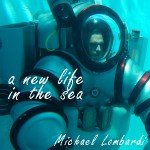 Back in 2007, I attended an evening presentation in downtown Providence by artist Michael Townsend. Townsend, a well-respected artist from Rhode Island to New York, gained a sort of national fame when his four year project to set up residence inside the Providence Place Mall was exposed. That subject alone deserves lengthy discussion here at some point, but what sparked intrigue was discussion following his presentation.
Back in 2007, I attended an evening presentation in downtown Providence by artist Michael Townsend. Townsend, a well-respected artist from Rhode Island to New York, gained a sort of national fame when his four year project to set up residence inside the Providence Place Mall was exposed. That subject alone deserves lengthy discussion here at some point, but what sparked intrigue was discussion following his presentation.
One person in the audience brought up the topic of ‘Temporary Autonomous Zones’ or ‘TAZ’, and how this artistic demonstration fit within the context of our understanding the structure and function of TAZs in everyday life. At the time, ‘TAZ’ was a new term to me, so my research into the subject lead me first deep into the topic of ‘urban exploration’ (also fascinating), and then to the history of autonomous civilizations and their role in our psychology and sustainability.
The terminology ‘temporary autonomous zone’ was coined by author Peter Lamborn Wilson in 1991 book entitled ‘TAZ – The Temporary Autonomous Zone: Ontological Anarchy, Poetic Terrorism’ in which he used the pseudonym Hakim Bey. The work presents a somewhat alternative and dark philosophy that society forms groups that are essentially off the grid, and operating free from conventionally organized government and legal structures. This is built upon several historical examples including reference to the idea of ‘pirate utopias’.
Pirate utopias, also described by Wilson, are defined as secret islands once used for supply purposes by pirates , and were early forms of ‘autonomous mini societies’ that existed beyond the realm and reach of governments. All of us who take to the sea have just a little bit of pirate in us…the energy from the thrill of the journey, and empowerment from the solitude of being out to sea aboard a ship, and the freedoms that come with taking a look beneath the waves. The ocean, being vast and without borders encourages and promotes the feeling of autonomy out of necessity for human survival. Those who cannot step up and take control of this space, often fall victim to the many hazards faced while out on the water.
These autonomous spaces – be it a ship, a pirate run island utopia, or a secret dwelling buried deep inside say a shopping mall – do in fact call for unique schemes of management. People are forced to cooperate, and collaborate…for fear of mutiny! Here, back in the ‘real world’, we have succumb our freedoms to a hierarchal societal and community structure. This relieves the stressors of survival, as we have become dependent on the system providing for us to some extent – especially the basics…food, water, and shelter.
Back in the colonial time, perhaps the last period where smaller scale community autonomy was prevalent, people worked together to survive. They traded, bartered, and collaborated to make use of unique skill sets that only their neighbor may have possessed. To encourage trade, international relations, and society at scale, this autonomy was sacrificed with larger scale government, bringing us to today – for better or worse.
Now consider charting a course in a new frontier..in Oceanus, where there are no sociopolitical borders, no physical boundaries, walls or fences, and no grander management scheme preventative of autonomy. Our first inhabitable spaces in the sea would likely be modest size pressurized vessels where we are forced to live and work very closely with a small group of settlers, effectively off the grid. We would be forced to share, to cooperate, to collaborate – without written rules, simply to survive. We may or may not have any interaction with or dependence on other settlers, and thus may truly be in an autonomous zone.
The question becomes one of scale. Is there a critical mass of autonomous groups, settlements, or clade in a new frontier that warrants imposition of a hierarchal management structure? This is to be determined for certain, and also where the excitement lies – as once we take to the sea, we are charting a new course for a sustainable humanity where lessons learned from terra firma can be put to good constructive use.
Related articles
- shopping at ‘Price Rite’ | an illustration of where we are going wrong (anewlifeinthesea.blogspot.com)
- Human Rights and Utopia (filipspagnoli.wordpress.com)
- Why Utopia’s Fail (socyberty.com)


